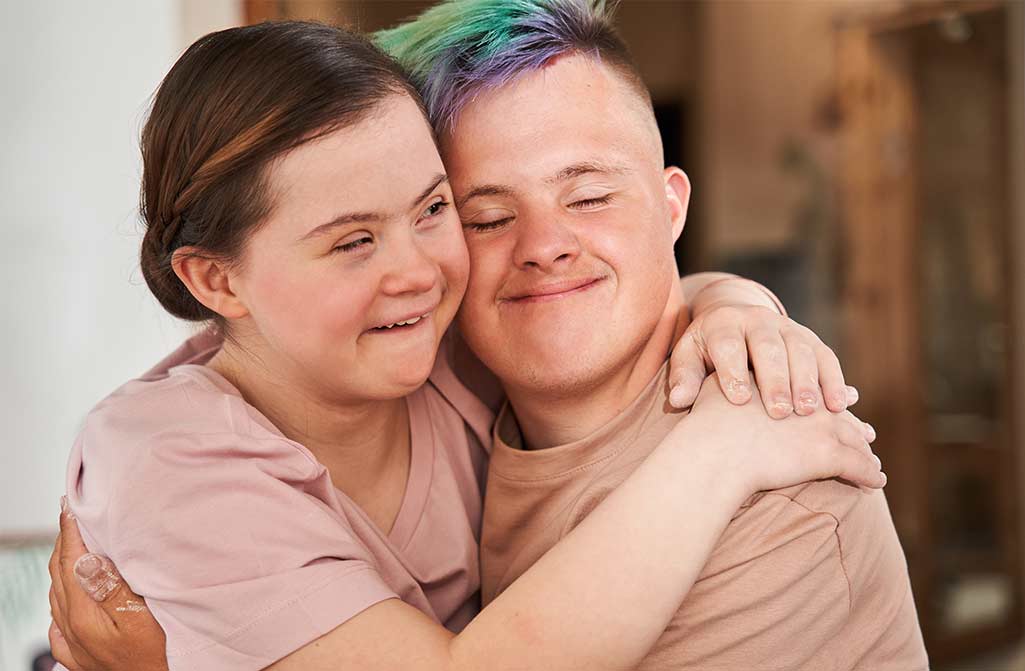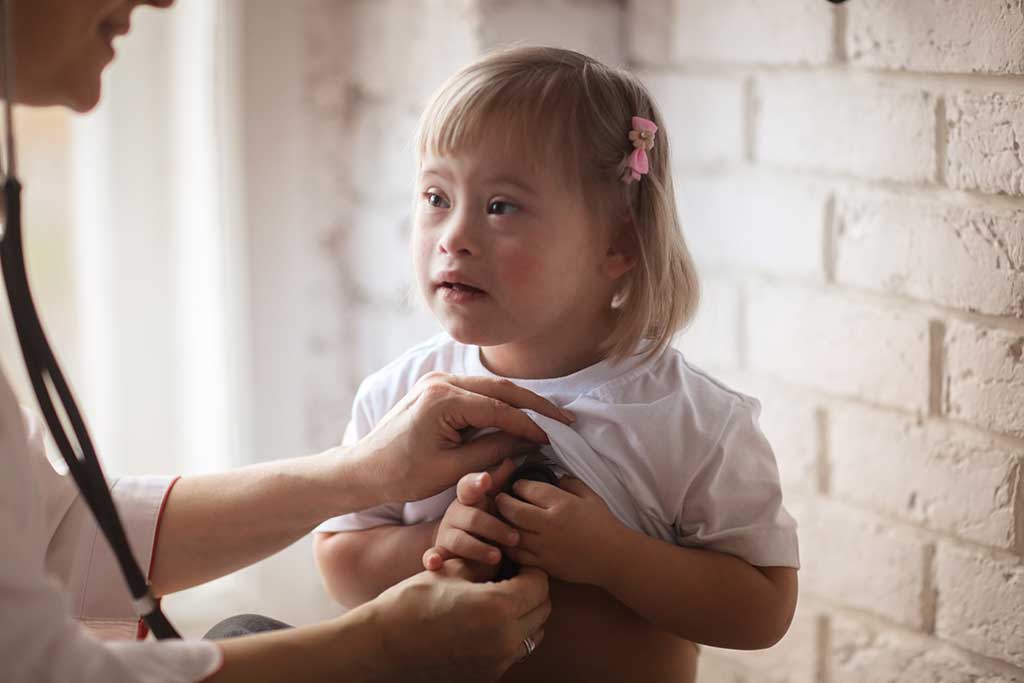WHAT IS DOWN
SYNDROME?
The Extra Chromosome
SCIentific facts
In every cell in the human body there is a nucleus, where genetic material is stored in genes. Genes carry the codes responsible for all of our inherited traits and are grouped along rod-like structures called chromosomes.
Typically, the nucleus of each cell contains 23 pairs of chromosomes, half of which are inherited from each parent. Down syndrome occurs when an individual has a full or partial extra copy of chromosome 21.
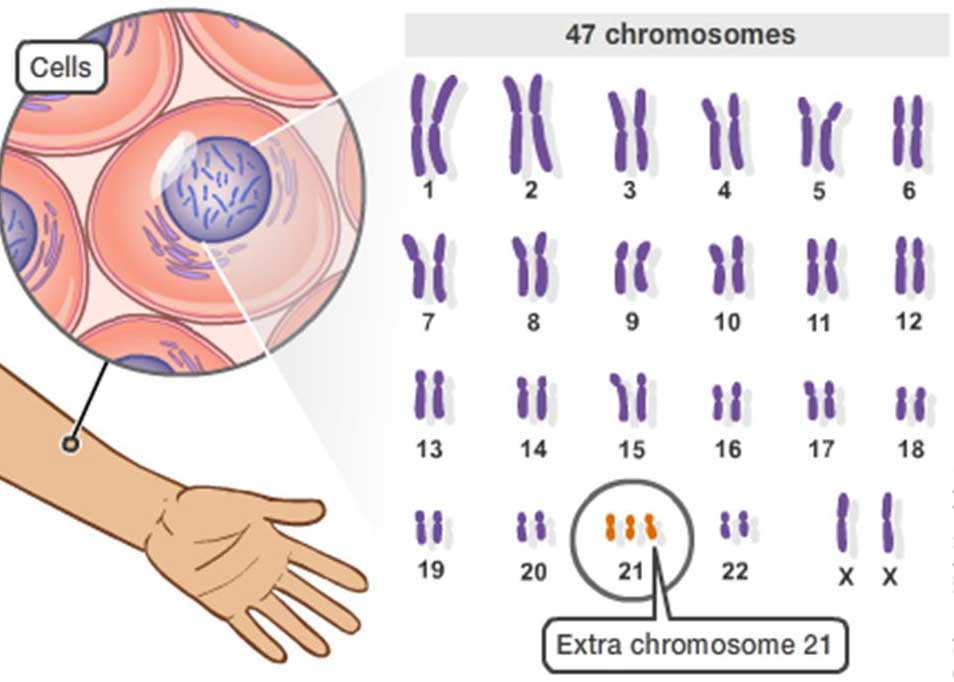
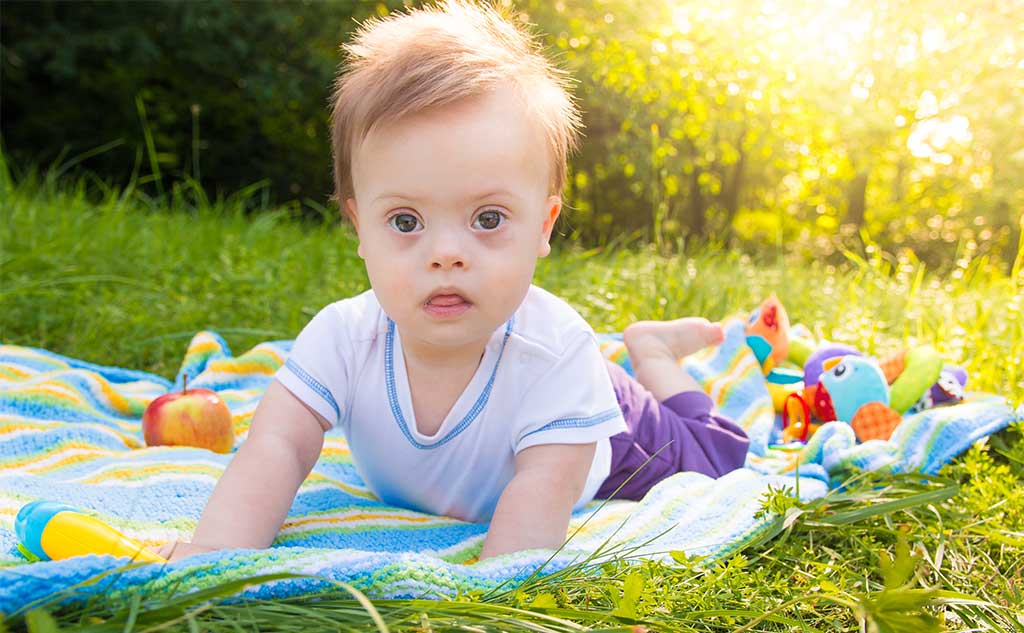
This additional genetic material alters the course of development and causes the characteristics associated with Down syndrome. A few of the common physical traits of Down syndrome are low muscle tone, small stature, an upward slant to the eyes, white spots on the colored part of the eye, a gap between the first and second toes, and a single deep crease across the center of the palm.
Each person with Down syndrome is a unique individual, wonderfully made, and may possess these characteristics to different degrees, or not at all.
How common is Down Syndrome?
According to the CDC, each year about 6,000 babies in the United States are born with Down syndrome, which is about 1 in every 700 babies born. While statistically rare, Down syndrome is the most common chromosomal condition in the world. If you have a child or family member with Down Syndrome, congratulations on hitting the jackpot—you are truly blessed!
Research History
When Was Down Syndrome Discovered?
For centuries, people with Down syndrome have been alluded to in art, literature and science. It wasn’t until the late nineteenth century, however, that John Langdon Down, an English physician, published an accurate description of a person with Down syndrome. It was this scholarly work, published in 1866, that earned Down the recognition as the “father” of the syndrome. Although other people had previously recognized the characteristics of the syndrome, it was Down who described the condition as a distinct and separate entity. Ever since, the condition has been named in honor of Mr. Down’s medical research.
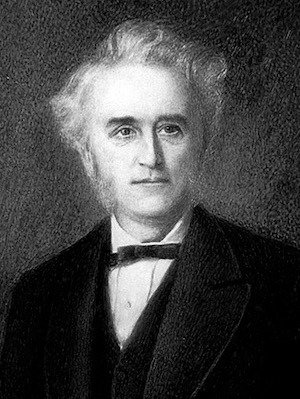
What else is there to know about John Langdon Down?
Down’s first major medical assignment was as chief physician of Earlswood, an institution for people with intellectual and developmental disabilities. Prior to Earlswood, Down had no experience caring for people with these types of disabilities. But something about them interested him. He saw their value and their humanity in a time when others didn’t. He genuinely enjoyed being around them, and he became infuriated by the way persons with disabilities were commonly treated. Corporal punishment was common in society, there was poor hygiene, high mortality rates, and little meaningful for the patients to do. Down insisted on change. He hired all new staff, demanded proper care and hygiene, prohibited punishment, and offered crafts and hobbies to his patients. He took beautiful portraits of his patients, dressing them in their nicest gowns and suits, and posing them in flattering ways. He used this portrait collection of over 200 photos to support his clinical description of Down syndrome, pointing out the physical features he noticed, as well as the other clinical observations he made.
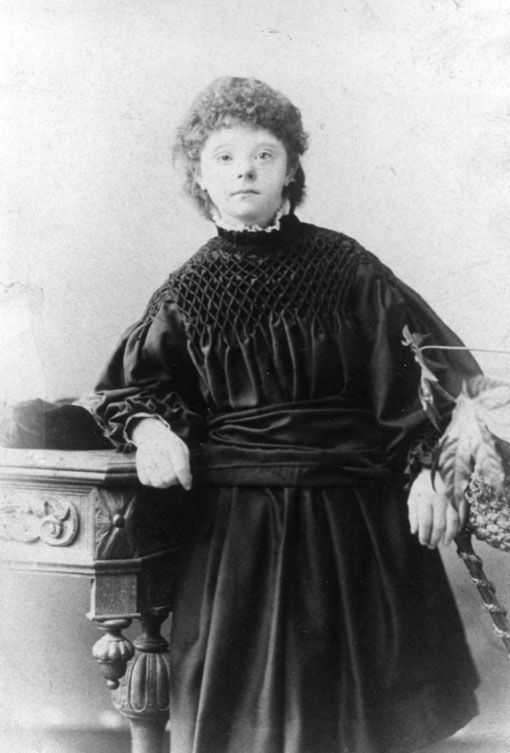

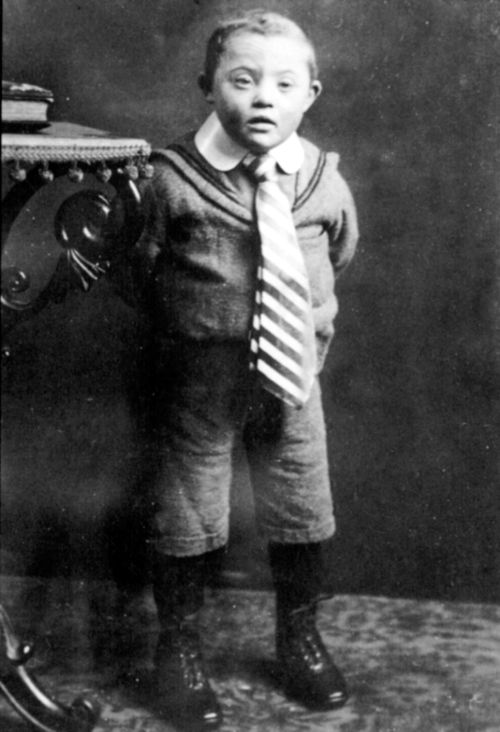
After resigning from Earlswood, Down set up his own private home, called Normansfield, for those with developmental and intellectual disabilities. He ensured that the facility met the highest standards of comfort and hygiene. All people who were brought to Normansfield were privately educated. They were taught to ride horses, garden, and craft. Creative outlets were provided and Down commissioned a small theater for its residents. By 1876, the number of residents grew to 160. Down died in 1896 at the age of 67. His grandson, born in 1905, was diagnosed with Down syndrome. Today, Normansfield is known as the Langdon Down Centre and it accommodates the headquarters of the UK’s Down Syndrome Association.
What medical advancements have been made?
In recent history, advances in medicine and science have enabled researchers to investigate the characteristics of people with Down syndrome. In 1959, the French geneticist Jérôme Lejeune identified Down syndrome as a chromosomal condition. Instead of the usual 46 chromosomes present in each cell, Lejeune observed 47 in the cells of individuals with Down syndrome.
It was later determined that an extra partial or whole copy of chromosome 21 results in the characteristics associated with Down syndrome. In the year 2000, an international team of scientists successfully identified and catalogued each of the approximately 329 genes on chromosome 21. This accomplishment opened the door to great advances in Down syndrome research.
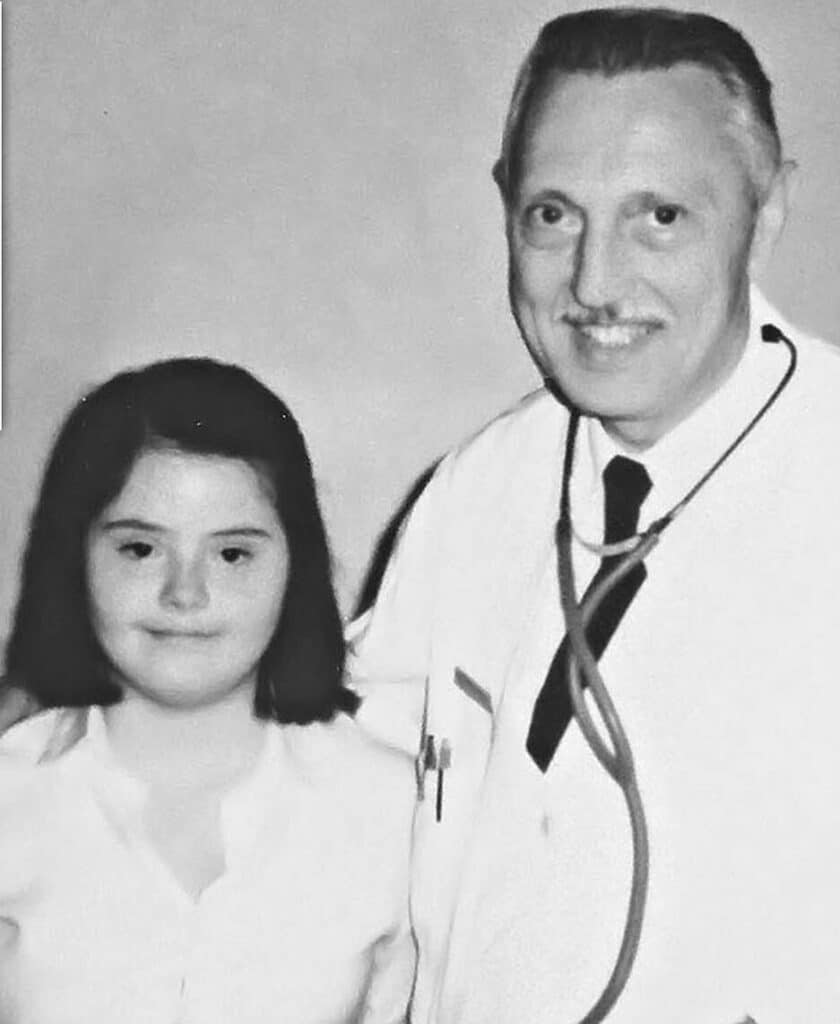
How is Down Syndrome Diagnosed?
Prenatally
There are two categories of tests for Down syndrome that can be performed before a baby is born: screening tests and diagnostic tests. Prenatal screens estimate the chance of the fetus having Down syndrome. These tests do not tell you for sure whether your fetus has Down syndrome; they only provide a probability. Diagnostic tests, on the other hand, can provide a definitive diagnosis with almost 100% accuracy. Both screening and diagnostic tests are now routinely offered to women of all ages.
There is an extensive menu of prenatal screening tests now available for pregnant women. Most screening tests involve a blood test and an ultrasound (sonogram). The blood tests (or serum screening tests) measure quantities of various substances in the blood of the mother. Together with a woman’s age, these are used to estimate her chance of having a child with Down syndrome. These blood tests are often performed in conjunction with a detailed sonogram to check for “markers” (characteristics that some researchers feel may have a significant association with Down syndrome). New advanced prenatal screens are now able to detect chromosomal material from the fetus that is circulating in the maternal blood. These tests are not invasive (like the diagnostic tests below), but they provide a high accuracy rate. Still, these screens will not definitively diagnose Down syndrome.
The diagnostic procedures available for prenatal diagnosis of Down syndrome are chorionic villus sampling (CVS) and amniocentesis. These procedures, which carry up to a 1% risk of causing a spontaneous termination (miscarriage), are nearly 100% accurate in diagnosing Down syndrome. Amniocentesis is usually performed in the second trimester between 15 and 20 weeks of gestation and CVS in the first trimester between 9 and 14 weeks.
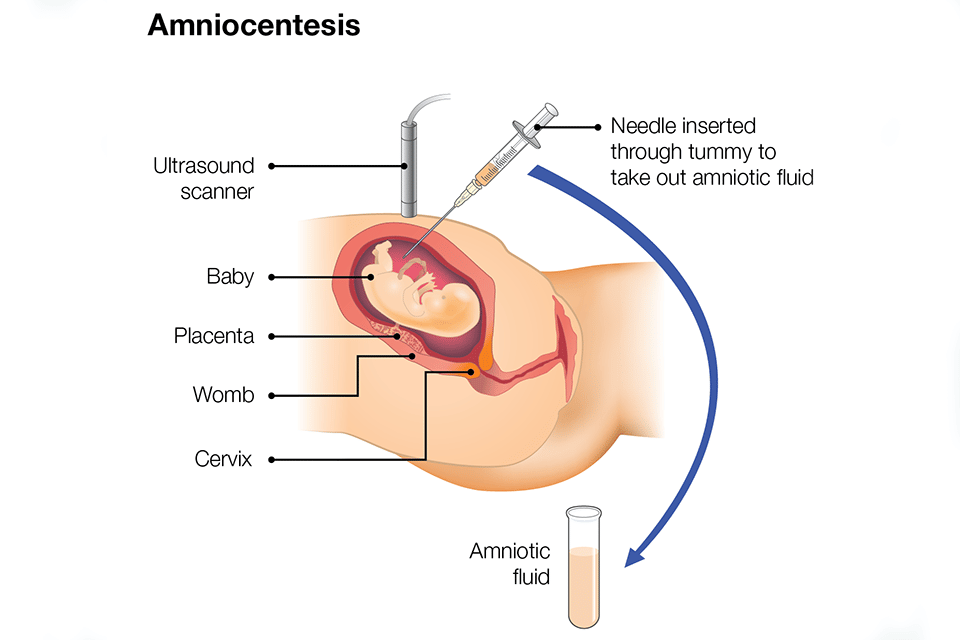
At Birth
Down syndrome is usually identified at birth by the presence of certain physical traits: low muscle tone, a single deep crease across the palm of the hand, a slightly flattened facial profile and an upward slant to the eyes. Because these features may be present in babies without Down syndrome, a chromosomal analysis called a karyotype is done to confirm the diagnosis. To obtain a karyotype, doctors draw a blood sample to examine the baby’s cells. They photograph the chromosomes and then group them by size, number, and shape. By examining the karyotype, doctors can definitively diagnose Down syndrome. Another genetic test called FISH can apply similar principles and confirm a diagnosis in a shorter amount of time.
What Causes Down Syndrome?
Regardless of the type of Down syndrome a person may have, all people with Down syndrome have an extra, critical portion of chromosome 21 present in all or some of their cells. This additional genetic material alters the course of development and causes the characteristics associated with Down syndrome.
The cause of the extra full or partial chromosome is still unknown. Maternal age is the only factor that has been linked to an increased chance of having a baby with Down syndrome resulting from nondisjunction or mosaicism. However, due to higher birth rates in younger women, 80% of children with Down syndrome are born to women under 35 years of age.
There is no definitive scientific research that indicates that Down syndrome is caused by environmental factors or the parents’ activities before or during pregnancy. The additional partial or full copy of the 21st chromosome which causes Down syndrome can originate from either the father or the mother.
What is the Likelihood of Having a Child with Down Syndrome?
Down syndrome occurs in people of all races and economic levels, though older women have an increased chance of having a child with Down syndrome. The proportion of mothers, 35 years of age or older who had children with Down syndrome was 57% in 2016. The age of the mother does not seem to be linked to the risk of translocation.
Since many couples are postponing parenting until later in life, the incidence of Down syndrome conceptions is expected to increase. Therefore, genetic counseling for parents is becoming increasingly important. Still, many physicians are not fully informed about advising their patients about the incidences of Down syndrome, advancements in diagnosis, and the protocols for care and treatment of babies born with Down syndrome.
Are There Different Types of Down syndrome?
TRISOMY 21 (NONDISJUNCTION)
Down syndrome is usually caused by an error in cell division called “nondisjunction”. Nondisjunction results in an embryo with three copies of chromosome 21 instead of the usual two. Prior to or at conception, a pair of 21st chromosomes in either the sperm or the egg fails to separate. As the embryo develops, the extra chromosome is replicated in every cell of the body. This type of Down syndrome, which accounts for 95% of cases, is called Trisomy 21.
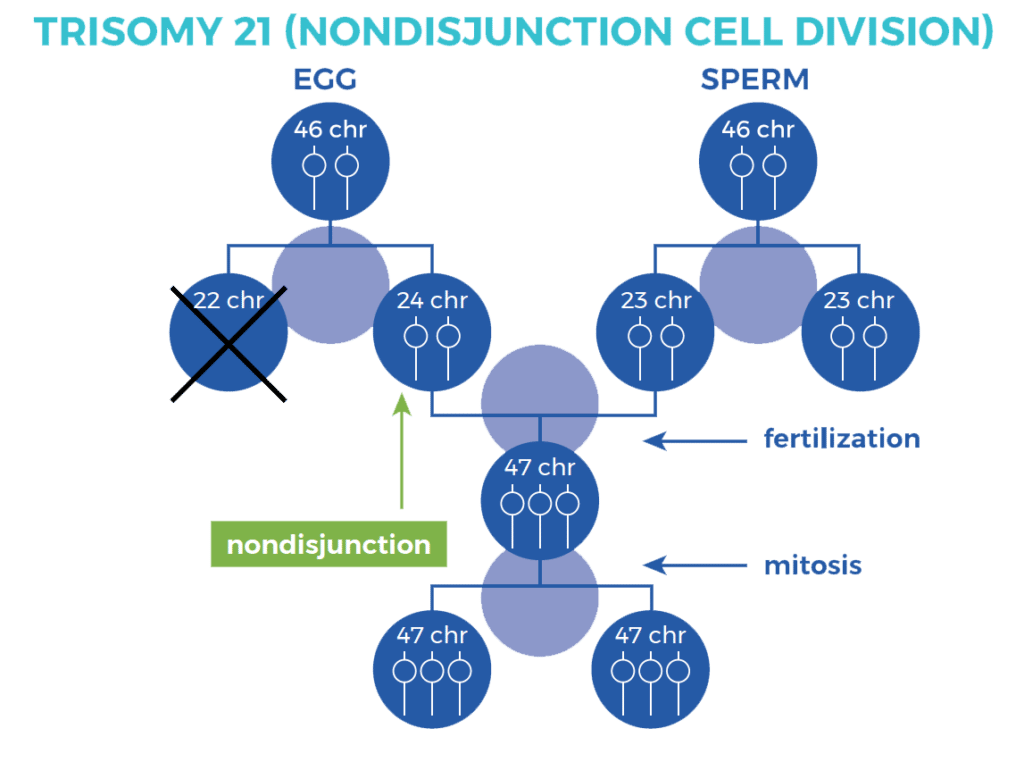
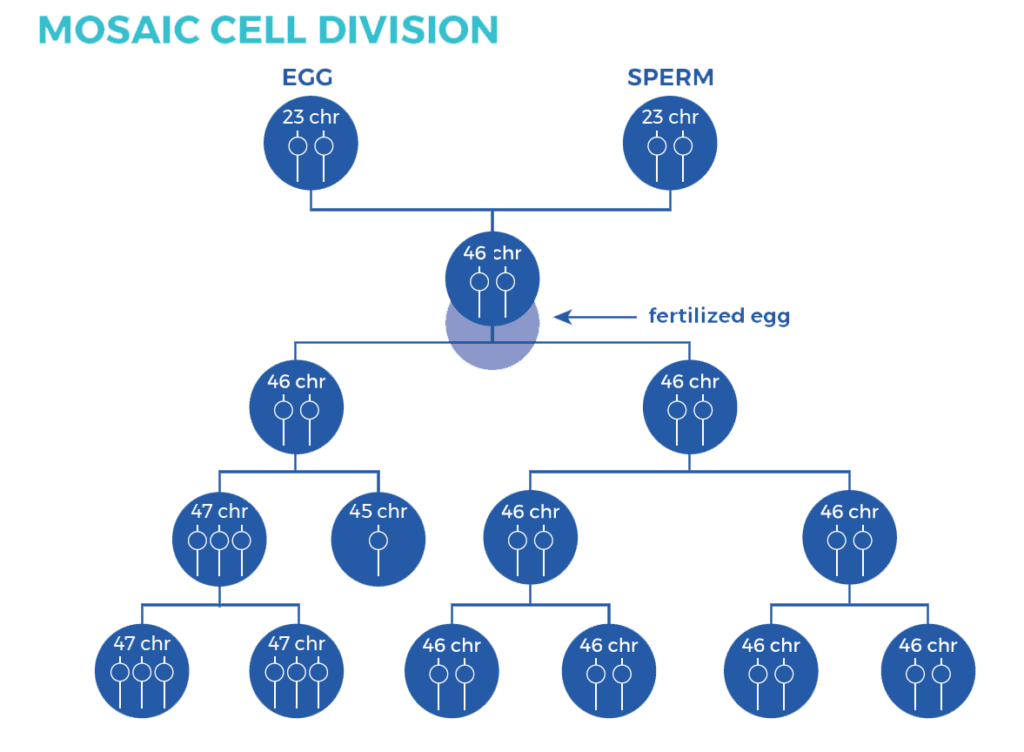
MOSAICISM
Mosaicism (or mosaic Down syndrome) is diagnosed when there is a mixture of two types of cells, some containing the usual 46 chromosomes and some containing 47. Those cells with 47 chromosomes contain an extra chromosome 21.
Mosaicism is the least common form of Down syndrome and accounts for only about 1% of all cases of Down syndrome. Research has indicated that individuals with mosaic Down syndrome may have fewer characteristics of Down syndrome than those with other types of Down syndrome. However, broad generalizations are not possible due to the wide range of abilities people with Down syndrome possess.
TRANSLOCATION
In translocation, which accounts for about 4% of cases of Down syndrome, the total number of chromosomes in the cells remains 46; however, an additional full or partial copy of chromosome 21 attaches to another chromosome, usually chromosome 14. The presence of the extra full or partial chromosome 21 causes the characteristics of Down syndrome.
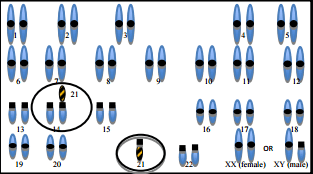
Does Down Syndrome Run in Families?
All 3 types of Down syndrome are genetic conditions (relating to the genes), but only 1% of all cases of Down syndrome have a hereditary component (passed from parent to child through the genes). Heredity is not a factor in trisomy 21 (nondisjunction) and mosaicism. However, in one-third of cases of Down syndrome resulting from translocation there is a hereditary component – accounting for about 1% of all cases of Down syndrome.
What Impact Does Down Syndrome Have on Society?
Individuals with Down syndrome are becoming increasingly integrated into society and community organizations, such as school, health care systems, work forces, and social and recreational activities. Individuals with Down syndrome possess varying degrees of cognitive delays, from very mild to severe. Most people with Down syndrome have cognitive delays that are mild to moderate.
Due to advances in medical technology, individuals with Down syndrome are living longer than ever before. In 1910, children with Down syndrome were expected to survive to age nine. With the discovery of antibiotics, the average survival age increased to 19 or 20. Now, with recent advancements in clinical treatment, most particularly corrective heart surgeries, as many as 80% of adults with Down syndrome reach age 60, and many live even longer. More and more Americans are interacting with individuals with Down syndrome, increasing the need for widespread public education and acceptance.
Interested in joining the Manasota BUDS family?
Membership is FREE, so join today and help us in bringing up Down syndrome!

